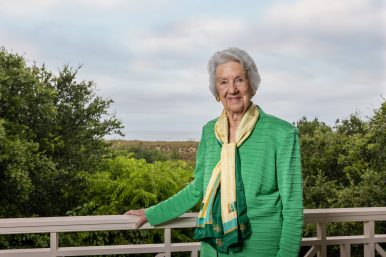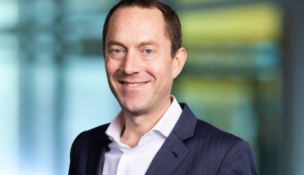Batten donates $100M to expand W&M marine, coastal research
University's largest ever gift will grow VIMS
Kate Andrews //July 24, 2024//

A rendering by 3North of William & Mary's newly renamed Batten School of Coastal & Marine Sciences, named for philanthropist Jane Batten, who made a record-setting $100 million donation to the university in July 2024. Image courtesy William & Mary

A rendering by 3North of William & Mary's newly renamed Batten School of Coastal & Marine Sciences, named for philanthropist Jane Batten, who made a record-setting $100 million donation to the university in July 2024. Image courtesy William & Mary
Batten donates $100M to expand W&M marine, coastal research
University's largest ever gift will grow VIMS
Kate Andrews //July 24, 2024//
Jane Batten, the matriarch of a Hampton Roads family known for its philanthropy, has pledged $100 million to William & Mary to boost coastal and marine science research towards finding global solutions for flooding and sea-level rise, the Williamsburg university announced Wednesday. The newly named Batten School of Coastal & Marine Sciences will expand the Virginia Institute of Marine Science (VIMS) and allow it to hire more scientists whose research could have a worldwide impact, officials say.
Batten’s donation is the largest in the 331-year-old university’s history, and W&M officials say the nine-figure gift is “by a factor of four” the largest donation ever made to any research institution focused on marine and coastal science. The donation will be used to build out VIMS’ site on the York River in Gloucester Point, and hire more researchers who can examine the impact of sea-level rise, storm intensity, flooding and other climate-fueled impacts on coastal communities.
The university’s existing School of Marine Science, renamed for Batten as of Wednesday, is located at VIMS’ facility, and although the Batten School’s construction plans and timeline have not yet been set, the school will remain at the VIMS site across from Yorktown on the York River, the university said in its announcement.
According to W&M, Batten’s gift will also go toward the creation of a bachelor’s degree in coastal and marine sciences, in addition to existing graduate and doctoral degrees offered at VIMS. The State Council for Higher Education in Virginia (SCHEV) must approve the new undergraduate major. The university also plans to expand interdisciplinary courses on marine and coastal sciences that non-major students can participate in.
W&M also hopes to raise $100 million more through private, state and federal sources to complement Batten’s donation. According to President Katherine Rowe, about $50 million of Batten’s gift will go toward campus infrastructure, including new learning and research spaces, but the university is still determining whether to renovate existing structures, construct new buildings or pursue a combination of both.
“This gift propels us forward toward great promise and progress,” Batten said in a statement. “I am confident that this will spark significant change, building resilience in coastal communities in the commonwealth and across the globe for generations to come.
“I’m calling on fellow philanthropists, government leaders, alumni and friends to join me in taking action,” she added. “I’ve always believed that philanthropy is not just something you should do, it is something that is a privilege to do. I’m privileged to be able to give to something that will be a game-changer for the world.”

A Virginia Beach resident, Batten is a former W&M board member, as was her late husband, Frank Batten, who was chairman and CEO of Landmark Communications and a co-founder of The Weather Channel. The Batten family — including the couple’s children, Dorothy and Frank Batten Jr. — have made significant donations to William & Mary, the Slover Library in Norfolk, Hollins University, Old Dominion University, the University of Virginia and other state institutions over the years.
VIMS, a state agency charged with conducting research and providing scientific data on Virginia’s waterways to the commonwealth, was started in 1940 and was integrated with William & Mary in 1979. Over the past decades, VIMS has researched how to maintain and grow Virginia’s oyster and blue crab populations, monitor and forecast sea-level rise, and identify causes and risks of water pollution, among other subjects of study. In 2021, W&M started its Vision 2026 water initiative, in which the university pledged to study solutions to build coastal resilience not just in Virginia but worldwide.
Rowe noted in an interview with Virginia Business that just in the commonwealth, approximately 5 million people live on coastlines, and “many more than that are affected by the watershed at the Chesapeake Bay. In the U.S., that’s 128 million, and globally, 3.2 billion human beings.
“It became really clear to me that there is no institution better positioned to address the environmental threats, the economic challenges that are faced in the world’s coastlines and oceans, and it was starting at that point 30 or more years ago,” Rowe added. “William & Mary and VIMS have been at the vanguard of that kind of impactful research for a long, long time. So we see the Batten School as powering at a much higher level the kinds of ‘science for solutions’ that William & Mary has been producing for decades, and to do that for Virginia, and more broadly to do that globally.”
Derek Aday, VIMS’ director and dean of the Batten School, said that the donation has “transformed every aspect of our mission generationally. This is not like naming a building that eventually is torn down. This will affect our research, our teaching, our advisory service for generations to come.”
Both Aday and Rowe say they hope there will be other philanthropists who follow Batten’s lead and contribute funding to the issue of global warming, coastal resilience and other key environmental factors the world faces.
“There will be imitators,” Aday said, “as there should be. This is the leading edge.”
g

















